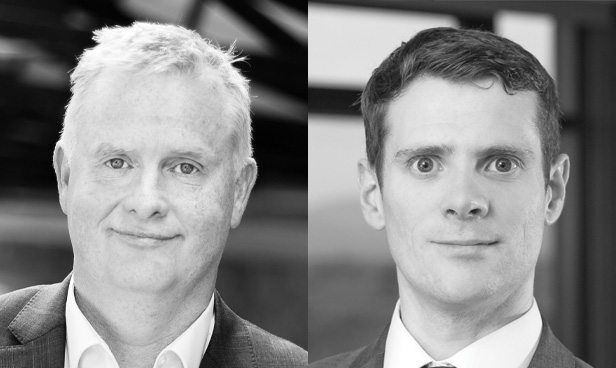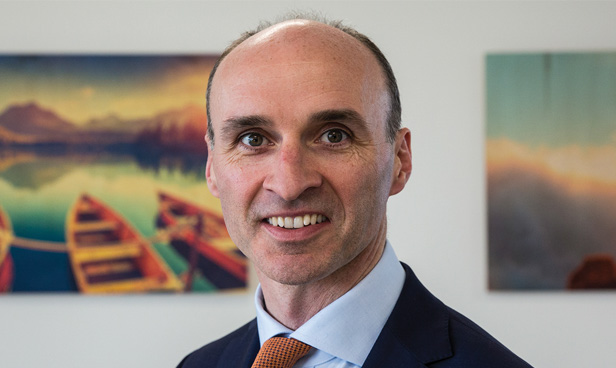
PR5: Providing an investment framework for a lower carbon future
20th April 2021
Powering the Green Recovery in the post COVID-19 world
20th April 2021The future of energy in Ireland: Getting greener

Ireland’s energy transition has been making great strides. The government has led the way in setting ambitious targets, creating favourable regulatory and support structures and creating markets for the green economy. As a result, renewable capacity has greatly expanded since 2005. More needs to be done to decarbonise both transport and residential sectors, but the groundwork has been laid.
The transition toward greater energy independence, a more diversified mix of energy sources and reduced emissions has been proceeding at pace in Ireland. So much so, that the World Energy Council ranked it one of the top improvers in Energy Sustainability in 2020 due to its rapid increase in renewable energy supply.1
Meeting the EU’s 2030 decarbonisation targets will be dependent on supporting the growth of investment in solar, wind and other renewable solutions. Incentivising new energy storage technologies, boosting the use of electric vehicles and devising innovative business models and services for the green economy, will also play their part.
The government has taken a number of steps to set the country on course to become climate neutral by 2050. The ambitious Climate Action Plan 2019 aims to produce 70% of electricity from renewable sources by 2030. Onshore wind has been the main beneficiary of policy support to-date. With the introduction of the Renewable Energy Support Scheme (RESS), more support mechanisms were created for utility-scale solar. RESS auctions in 2020 resulted in the award of contracts to almost 1,300MW of projects, including 800MW of solar. There is a large pipeline of renewable generation including onshore and offshore wind and solar projects.
Ireland’s energy consumption
Due to larger structural shifts in the economy in recent years, transport is now the largest sectoral consumer of energy, followed by industry and residential sectors.2 Transport is also the largest emitter of GHG emissions, about 20% of the total. Road-based transport modes occupy the highest shares. This does, however, provide a meaningful opportunity to tackle both energy sustainability and security. The 2019 Climate Action Plan set out a ban on internal combustion engine and diesel vehicle sales by 2030, and set a goal of one million electric vehicles (EVs) on the road by then.3
The residential sector, like transport, has seen its share of energy consumption growing. Yet here, too, the government has instituted ambitious plans including retrofit programmes. Building regulations require renewable energy systems installed in all new builds and fossil fuel boilers will be banned by 2025.
Green finance
Both the government and the corporate sector have begun to tap green finance markets in recent years. Given the benefits (short and long term), investment in infrastructure should be maximised and advanced where possible. The economic benefit of appropriate investment will more than match any borrowing costs particularly with the current lower cost of borrowing.
Climate action is a worldwide concern — a focus on climate action and sustainability is crucial and necessary across all areas of spending. There is merit in adopting a low carbon sustainable approach to all investment having Irish public investment leading the way in climate change.
Deloitte’s Future of Energy scenarios4
As global energy demand continues to increase, ongoing climate change will result in consumer and market pressure, creating a global imperative to decarbonise.
Society, through consumer, market, and government action, will set the pace for the evolution of the energy system. Collaborative global relations, or a more volatile, insular world will shape the nature of this evolution, and further catalyse or decelerate it.
Recognising this, Deloitte has considered how the energy system will evolve by 2035 and how might this affect the extended energy ecosystem. Based on society’s response to climate change and global dynamics and developed four plausible and divergent scenarios for what the world might look like in 20355:
- Ready, set, innovate: Proactive societal response to climate change plus independent, regional economics;
- One team, one dream: Proactive societal response to climate change plus an open, collaborative global economy;
- Me and my resource: Reactive societal response to climate change plus independent, regional economics;
- Rising tide: Reactive societal response to climate change plus an open, collaborative global economy.
Consideration of such global indicators and the assessment of the implication of these scenarios can inform players in the Irish energy market on strategic moves.
Ger Butler is a Financial Advisory Director at Deloitte Ireland LLP across Energy and Infrastructure Projects.
- https://www.worldenergy.org/assets/downloads/World_Energy_Trilemma_Index_2020_-_REPORT.pdf
- Source: Economist Intelligence Unit, Ireland Industry Report: Energy 3rd Quarter 2020
- https://www2.deloitte.com/content/dam/insights/us/articles/4331_Deloitte-City-Mobility-Index/Dublin_GlobalCityMobility_WEB.pdf
- https://www2.deloitte.com/global/en/pages/energy-and-resources/articles/future-of-energy.html
- https://www2.deloitte.com/global/en/pages/energy-and-resources/articles/gx-energy-scenarios-in-focus.html
